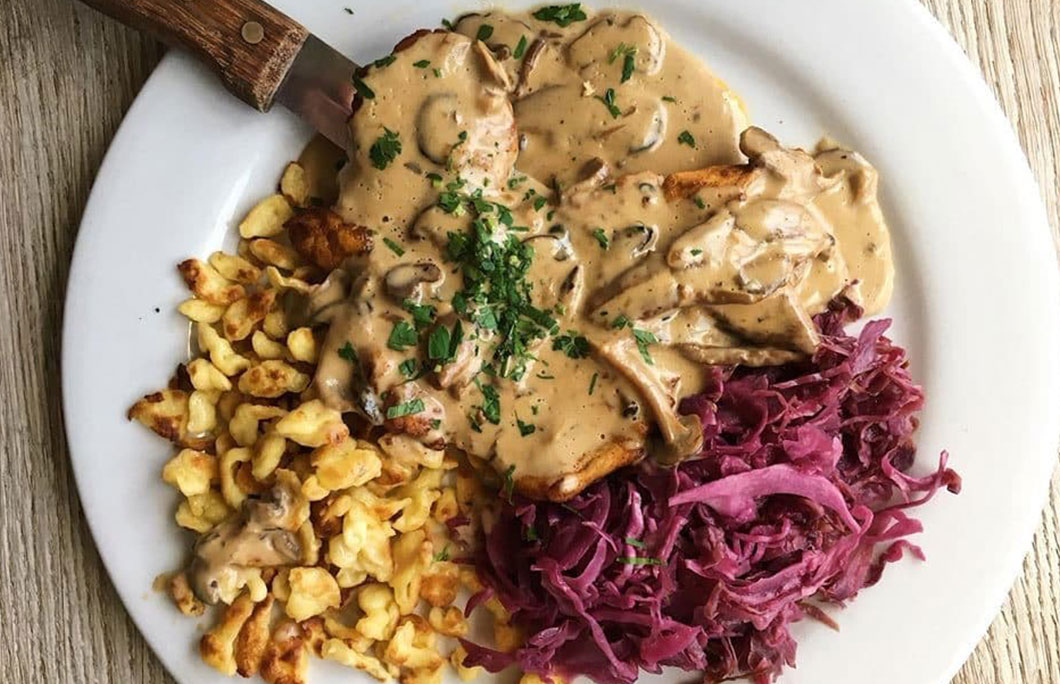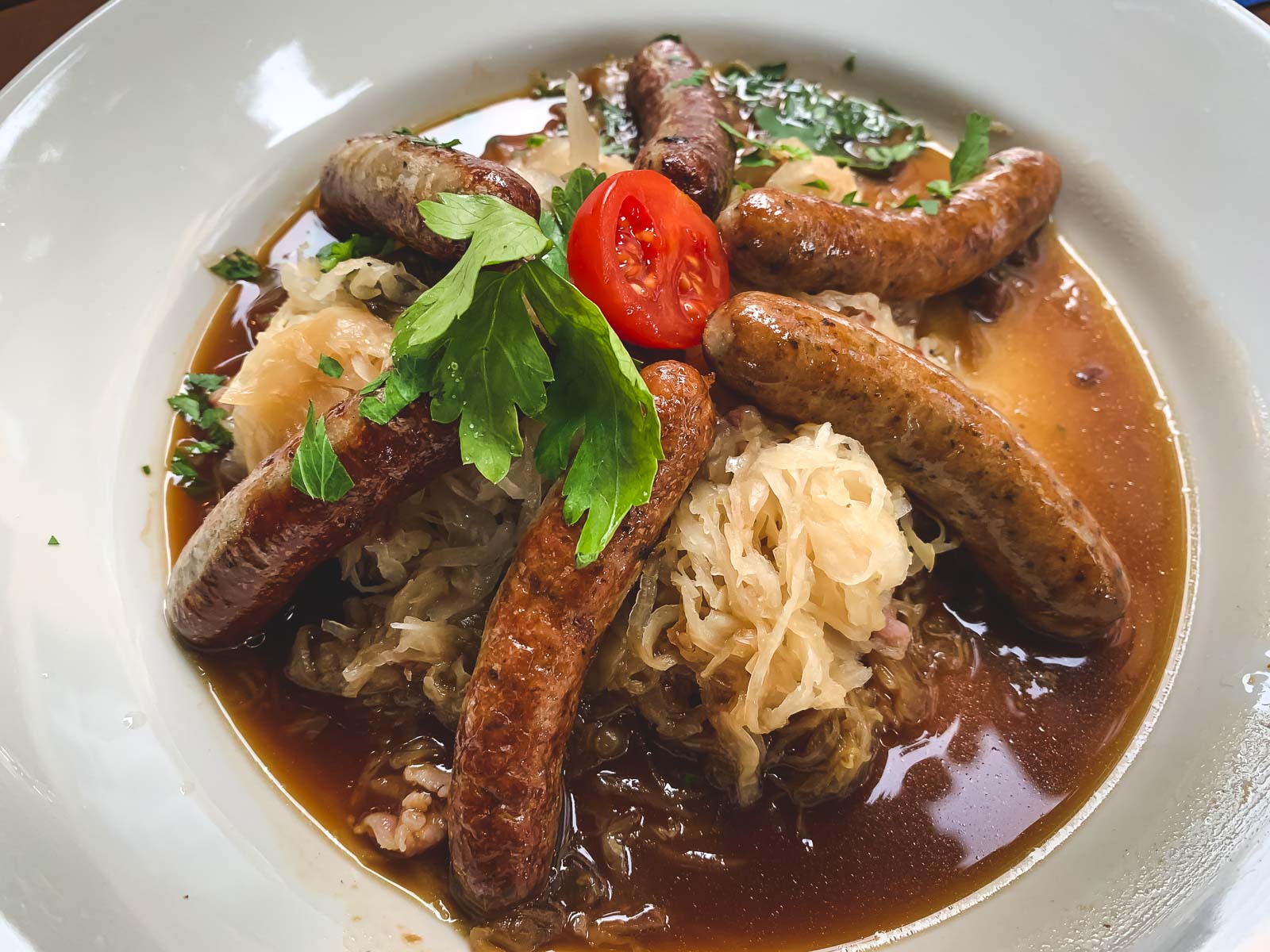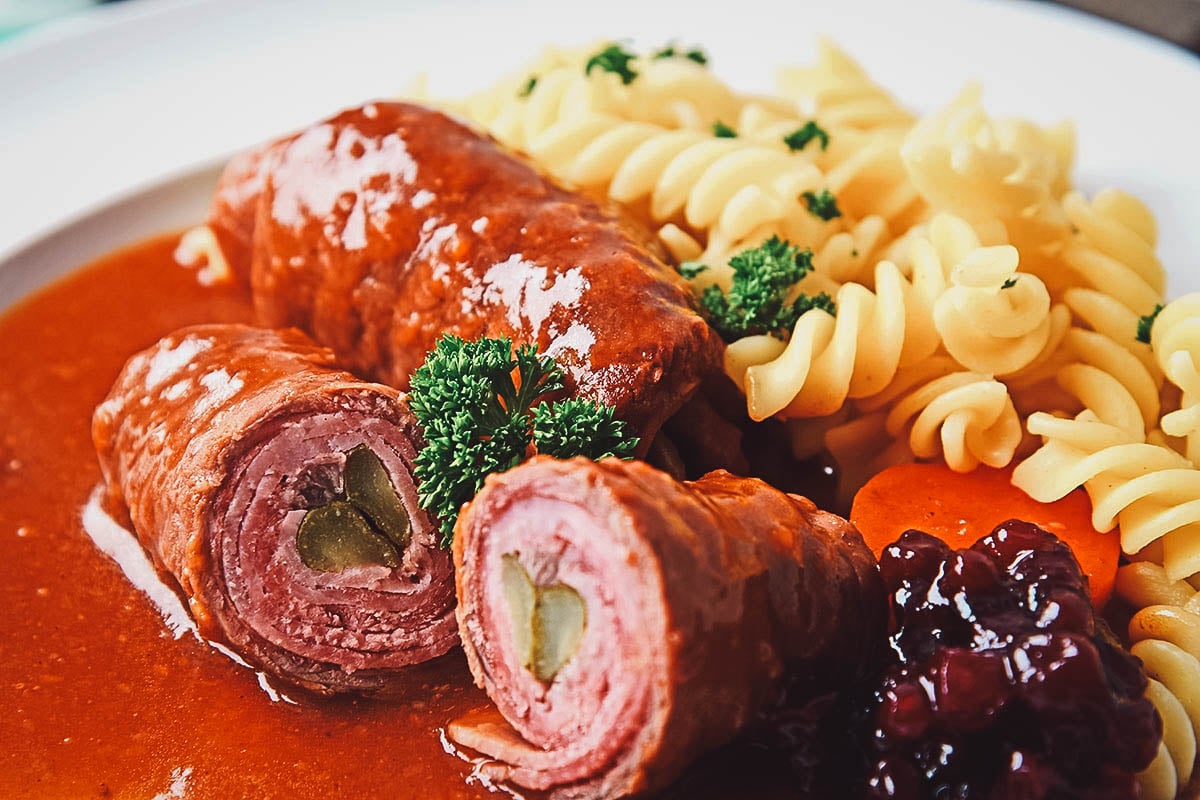Foods in German offers a tantalizing glimpse into the rich and diverse culinary traditions of Germany, inviting us on a gastronomic adventure that celebrates regional flavors, traditional techniques, and cultural significance.
From hearty appetizers to delectable desserts, German cuisine is a symphony of tastes and textures that reflects the country’s history, geography, and cultural heritage.
German Food Categories

German cuisine offers a diverse range of culinary experiences, from hearty appetizers to indulgent desserts and refreshing beverages. Each category holds a unique place in German dining traditions and showcases the country’s rich culinary heritage.
Appetizers
German appetizers, known as Vorspeisen, are designed to whet the appetite and prepare the palate for the main course. These dishes are often served cold or at room temperature and include:
-
-*Brotzeitteller
A platter of various breads, cheeses, and cold cuts.
-*Kartoffelsalat
A creamy potato salad with bacon, onions, and pickles.
-*Obatzda
A Bavarian cheese spread made with camembert, cream cheese, and paprika.
Entrees
German entrees, or Hauptgerichte, are typically substantial and meat-based. Some popular dishes include:
-
-*Sauerbraten
A marinated roast beef dish with a sweet and sour sauce.
-*Schnitzel
A breaded and fried cutlet made from pork, veal, or chicken.
-*Bratwurst
A grilled or fried sausage served with sauerkraut or mashed potatoes.
Desserts
German desserts, or Nachspeisen, are known for their sweetness and indulgence. Some favorites include:
-
-*Apfelstrudel
A flaky pastry filled with apples, cinnamon, and sugar.
-*Schwarzwälder Kirschtorte
A chocolate cake with layers of cherries and whipped cream.
-*Eierkuchen
A thin pancake filled with fruit, cheese, or ham.
Beverages
German beverages play a significant role in the country’s culinary culture. Some notable drinks include:
-
-*Bier
Beer is the national beverage of Germany and is available in a wide variety of styles.
-*Wein
German wines are renowned for their quality and range from dry to sweet.
-*Apfelsaft
Apple juice is a popular non-alcoholic beverage, often served with meals.
Regional German Cuisine
German cuisine is diverse and flavorful, with regional variations that reflect the country’s rich cultural and geographic diversity. Each region boasts unique ingredients, cooking methods, and dishes that have evolved over centuries.
The following are some of the most distinct regional variations in German cuisine:
Bavarian Cuisine
Bavarian cuisine is known for its hearty and flavorful dishes, often featuring meat, cheese, and beer. Popular dishes include:
- Schweinsbraten: Roasted pork knuckle served with potato dumplings and sauerkraut
- Weisswurst: White sausage made from veal and pork, typically served with sweet mustard
- Obatzda: A creamy cheese spread made with Camembert, butter, and paprika
Swabian Cuisine
Swabian cuisine is characterized by its use of noodles, dumplings, and hearty stews. Some of the most famous dishes include:
- Maultaschen: Large pasta pockets filled with meat, vegetables, and herbs
- Spätzle: Egg noodles served with cheese, onions, or gravy
- Gaisburger Marsch: A hearty beef stew with vegetables and potatoes
Saxonian Cuisine
Saxonian cuisine is known for its use of potatoes, cabbage, and pork. Some of the most popular dishes include:
- Kartoffelklöße: Potato dumplings served with gravy or meat
- Sauerbraten: Marinated beef roast served with potato dumplings and red cabbage
- Leipziger Allerlei: A vegetable stew made with asparagus, peas, carrots, and mushrooms
Northern German Cuisine, Foods in german
Northern German cuisine is influenced by the region’s proximity to the North Sea. Seafood is common, as well as hearty dishes like:
- Labskaus: A dish made from salted beef, potatoes, and beets
- Matjes: Pickled herring served with onions and potatoes
- Birnen, Bohnen und Speck: A dish made from pears, green beans, and bacon
Eastern German Cuisine
Eastern German cuisine has been influenced by Slavic and Polish flavors. Some of the most popular dishes include:
- Soljanka: A hearty soup made with meat, vegetables, and pickles
- Bigos: A stew made with sauerkraut, meat, and vegetables
- Piroggen: Dumplings filled with meat, cheese, or vegetables
German Food Ingredients
German cuisine is renowned for its hearty and flavorful dishes, which are often characterized by the use of fresh, high-quality ingredients. These ingredients play a vital role in creating the distinct flavors and textures that define German cooking.
German food ingredients can be broadly categorized into several groups, including:
Spices and Herbs
Spices and herbs are essential components of German cooking, adding depth of flavor and complexity to dishes. Common spices used in German cuisine include:
- Bay leaves
- Caraway seeds
- Cloves
- Cumin
- Dill
- Juniper berries
- Marjoram
- Mustard seeds
- Nutmeg
- Parsley
- Paprika
- Peppercorns
- Thyme
These spices and herbs are often used in combination to create complex flavor profiles, such as the classic combination of bay leaves, thyme, and parsley used in many German soups and stews.
Condiments
Condiments are also widely used in German cooking, adding a variety of flavors and textures to dishes. Common condiments include:
- Apple cider vinegar
- Mustard
- Mayonnaise
- Horseradish
- Sour cream
- Pickle relish
- Capers
- Chutney
Condiments are often used as finishing touches to dishes, adding a final burst of flavor and enhancing the overall taste experience.
Other Ingredients
In addition to spices, herbs, and condiments, German cooking also relies on a variety of other ingredients, including:
- Butter
- Flour
- Eggs
- Milk
- Cream
- Cheese
- Potatoes
- Cabbage
- Sausages
- Bacon
- Ham
- Pork
- Beef
These ingredients form the backbone of many German dishes, providing the base for soups, stews, casseroles, and a variety of other culinary creations.
The quality of German food ingredients is of paramount importance, as it directly impacts the taste and overall experience of the dish. German chefs and home cooks alike take pride in using fresh, locally sourced ingredients whenever possible.
German Food Preparation Techniques: Foods In German
German cuisine is renowned for its hearty and flavorful dishes, and the traditional preparation techniques play a crucial role in achieving these distinctive characteristics. From the meticulous roasting of meats to the gentle braising of vegetables, each technique contributes to the unique textures and flavors that define German food.
Roasting
Roasting is a fundamental technique in German cooking, particularly for meats. Large cuts of pork, beef, or poultry are seasoned generously and placed in a roasting pan with vegetables. The meat is roasted at high temperatures, allowing the exterior to develop a crispy crust while the interior remains tender and juicy.
This method not only enhances the flavor but also creates a visually appealing centerpiece for the meal.
Braising
Braising is another popular technique used to cook meats and vegetables. The ingredients are browned in a pan and then transferred to a covered pot or Dutch oven. A flavorful liquid, such as broth or beer, is added to the pot, and the mixture is simmered gently for several hours.
This slow and gentle cooking process allows the meat to become fall-off-the-bone tender while absorbing the rich flavors of the liquid.
Baking
Baking is a versatile technique used to create a wide range of German dishes, from savory breads to sweet pastries. German bakers are known for their meticulous attention to detail and use of high-quality ingredients. Traditional German breads, such as pumpernickel and rye bread, are characterized by their dense texture and hearty flavor.
German pastries, on the other hand, are often filled with fruits, nuts, or cream and are known for their delicate sweetness.
Specialized Equipment
German cuisine also makes use of specialized equipment to enhance the preparation process. The Dutch oven, a heavy-bottomed pot with a tight-fitting lid, is a versatile tool used for braising, stewing, and baking. The potato press is another common tool, used to create smooth and fluffy mashed potatoes.
Contribution to Flavors and Textures
The traditional German food preparation techniques described above contribute significantly to the unique flavors and textures of German cuisine. Roasting creates a crispy exterior and tender interior, while braising results in fall-off-the-bone tenderness. Baking produces a wide range of flavors and textures, from hearty breads to delicate pastries.
Specialized equipment, such as the Dutch oven and potato press, further enhances the cooking process and ensures consistent results.
German Food Culture

Food holds a central place in German society, deeply intertwined with its history, traditions, and social customs. German cuisine is known for its hearty dishes, diverse regional specialties, and emphasis on fresh, seasonal ingredients.
Food plays a significant role in German festivals, holidays, and family gatherings. Traditional dishes are prepared and shared, creating a sense of community and togetherness. From the festive gingerbread houses at Christmas to the hearty sausages at Oktoberfest, food is an integral part of German celebrations.
Etiquette and Customs
German dining experiences are characterized by certain etiquette and customs. It is customary to arrive on time for meals and to wait to be seated before eating. Table manners are generally formal, with utensils used in a specific way and elbows kept off the table.
It is considered polite to finish all the food on one’s plate and to refrain from talking with one’s mouth full.
German Food and Health

German cuisine is renowned for its hearty and flavorful dishes, but how does it fare in terms of nutritional value? This section explores the health aspects of German food, discussing its nutritional benefits and potential risks associated with certain dishes.
Additionally, it examines how German food culture promotes or influences healthy eating habits.
German cuisine offers a diverse range of dishes, from traditional meat-heavy fare to lighter vegetarian options. The nutritional value of German food varies depending on the specific dishes consumed. However, overall, German cuisine provides a good balance of essential nutrients, including protein, carbohydrates, fats, vitamins, and minerals.
Nutritional Benefits of German Cuisine
- High in protein:German cuisine is rich in protein, which is essential for building and repairing tissues, producing enzymes and hormones, and transporting oxygen and nutrients throughout the body. Meat, poultry, fish, eggs, and dairy products are all excellent sources of protein.
- Good source of carbohydrates:German cuisine provides a good source of carbohydrates, which are the body’s primary source of energy. Bread, potatoes, pasta, and rice are all common sources of carbohydrates in German dishes.
- Rich in fiber:German cuisine is also rich in fiber, which is important for digestive health, weight management, and blood sugar control. Whole grains, fruits, and vegetables are all good sources of fiber.
- Provides essential vitamins and minerals:German cuisine provides a good source of essential vitamins and minerals, including iron, calcium, vitamin C, and vitamin D. These nutrients are essential for overall health and well-being.
Potential Health Risks Associated with German Cuisine
While German cuisine offers many nutritional benefits, there are also some potential health risks associated with certain dishes. These risks include:
- High in saturated fat:German cuisine is often high in saturated fat, which can raise cholesterol levels and increase the risk of heart disease. Fatty meats, processed meats, and butter are all high in saturated fat.
- High in sodium:German cuisine is also often high in sodium, which can contribute to high blood pressure. Processed meats, canned foods, and salty snacks are all high in sodium.
- High in calories:Some German dishes are high in calories, which can contribute to weight gain. Rich desserts, fatty meats, and fried foods are all high in calories.
German Food Culture and Healthy Eating Habits
German food culture has a strong emphasis on fresh, seasonal ingredients and home-cooked meals. This can promote healthy eating habits, as it encourages people to consume more fruits, vegetables, and whole grains. Additionally, German cuisine often features traditional dishes that have been passed down through generations, which can help to preserve cultural heritage and promote a sense of community.
However, German food culture can also have some negative influences on healthy eating habits. For example, the emphasis on meat-heavy dishes can lead to excessive consumption of saturated fat. Additionally, the popularity of processed foods and sugary drinks can contribute to poor dietary choices.
Overall, German food culture has both positive and negative influences on healthy eating habits. By making smart choices and emphasizing fresh, whole foods, it is possible to enjoy the flavors of German cuisine while maintaining a healthy diet.
German Food Trends
German cuisine is constantly evolving, influenced by globalization, sustainability, and modern cooking techniques. Chefs are experimenting with new flavors and ingredients, creating innovative dishes that blend traditional German flavors with international influences.
Globalization and International Flavors
Globalization has brought a wider range of ingredients and cuisines to Germany. Chefs are incorporating flavors from around the world into their dishes, creating fusion cuisine that combines German traditions with international tastes. For example, Vietnamese pho soup has become popular in German restaurants, often with a German twist such as the addition of sauerkraut.
Sustainability and Regional Ingredients
Sustainability is becoming increasingly important in German food culture. Chefs are using local and seasonal ingredients to reduce their environmental impact. They are also working with farmers to promote sustainable farming practices. This focus on sustainability has led to a resurgence of interest in traditional German dishes made with regional ingredients.
Modern Cooking Techniques
Modern cooking techniques are also influencing German cuisine. Chefs are using sous vide, molecular gastronomy, and other techniques to create innovative dishes. These techniques allow chefs to experiment with flavors and textures in new ways, creating dishes that are both visually appealing and delicious.
The Future of German Cuisine
Based on current trends, the future of German cuisine is bright. Chefs are continuing to experiment with new flavors and ingredients, creating innovative dishes that blend traditional German flavors with international influences. Sustainability and modern cooking techniques will continue to play an important role in shaping the future of German cuisine.
German Food Resources
Delving into German cuisine offers a delightful culinary journey. To further explore this rich gastronomy, numerous resources are available.
Cookbooks
Immerse yourself in the flavors of German cooking with an array of cookbooks. These culinary guides provide step-by-step instructions, authentic recipes, and insights into German food culture.
- German Cookbook: Traditional German Recipes Made Easyby Ursula Heinzelmann: A comprehensive collection of classic German dishes, including hearty soups, savory main courses, and delectable desserts.
- Modern German Cookbook: Fresh Takes on Traditional Dishesby Katharina Seiser: A contemporary twist on German cuisine, featuring innovative recipes that showcase the versatility of German ingredients.
- The German Cookbook: A Complete Guide to German Cuisineby Mimi Sheraton: An in-depth exploration of German food history, regional specialties, and cooking techniques.
Websites
Discover a wealth of information on German food through dedicated websites. These online platforms offer recipes, articles, and culinary insights to enhance your knowledge.
- German Food Guide(www.germanfoodguide.com): A comprehensive website showcasing German cuisine, with recipes, restaurant recommendations, and cultural insights.
- My German Table(www.mygermantable.com): A personal blog sharing authentic German recipes, cooking tips, and stories about German food culture.
- German Recipes(www.german-recipes.net): An extensive collection of German recipes, categorized by region and dish type.
Food Tours
Experience German cuisine firsthand through organized food tours. These guided excursions take you to local markets, breweries, and restaurants, providing a unique opportunity to taste authentic German delicacies and learn about their culinary traditions.
- Berlin Food Tour(www.berlinfoodtour.com): A walking tour that explores the vibrant food scene of Berlin, sampling street food, traditional dishes, and local specialties.
- Munich Food Tour(www.munichfoodtour.com): A culinary adventure through the Bavarian capital, featuring visits to a beer garden, a traditional tavern, and a local market.
- Cologne Food Tour(www.colognefoodtour.com): A guided tour showcasing the culinary delights of Cologne, including regional specialties like Kölsch beer and Himmel und Äd.
Question & Answer Hub
What are some popular German appetizers?
German appetizers, or Vorspeisen, include classics like Kartoffelsalat (potato salad), Brezeln (pretzels), and Suppen (soups).
What is a typical German main course?
German main courses, or Hauptgerichte, often feature hearty dishes such as Schnitzel (breaded cutlets), Sauerbraten (marinated roast beef), and Spätzle (egg noodles).
What are some traditional German desserts?
German desserts, or Nachspeisen, are renowned for their sweetness and indulgence, with favorites including Apfelstrudel (apple strudel), Käsekuchen (cheesecake), and Schwarzwälder Kirschtorte (Black Forest cake).
